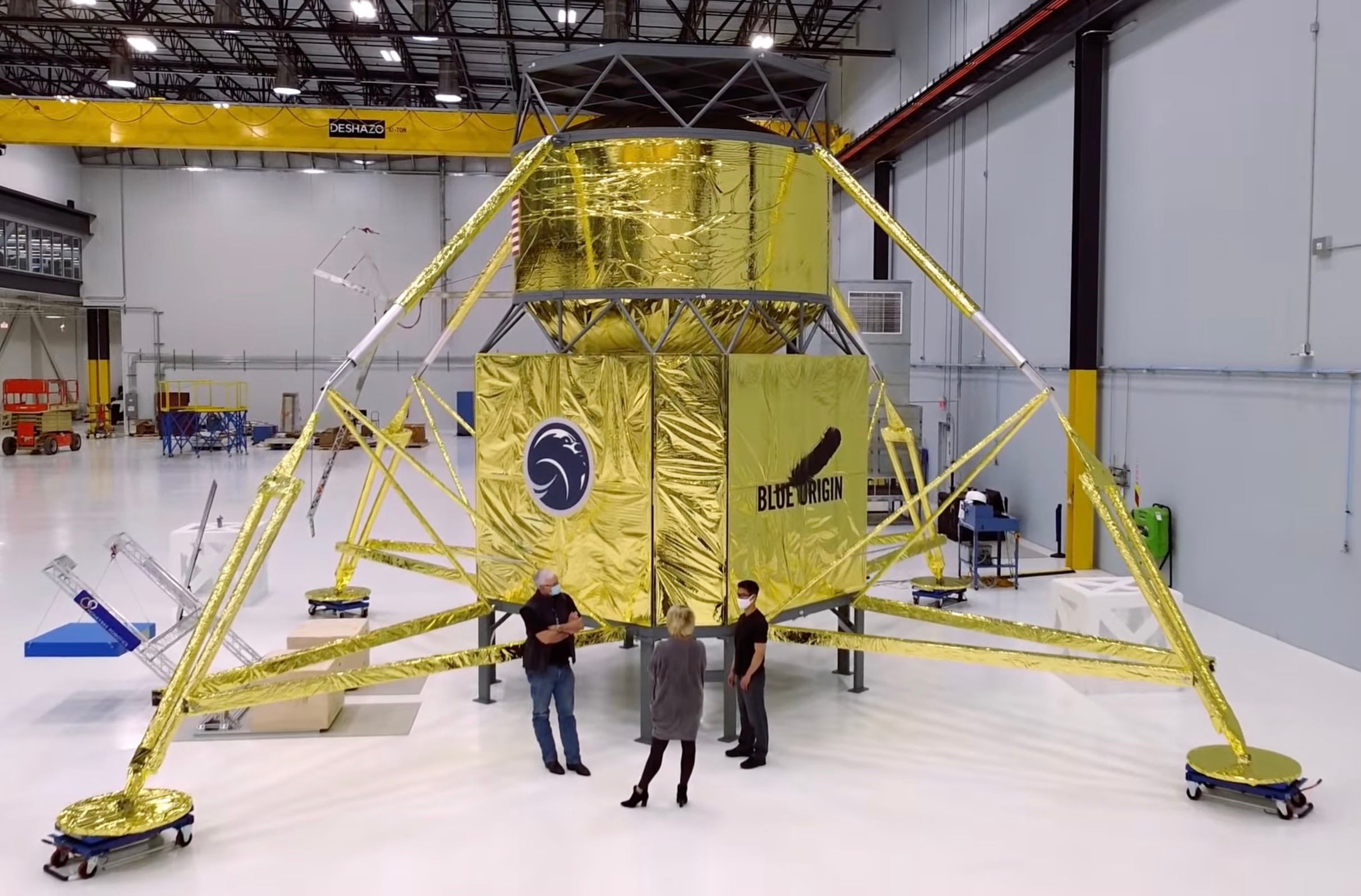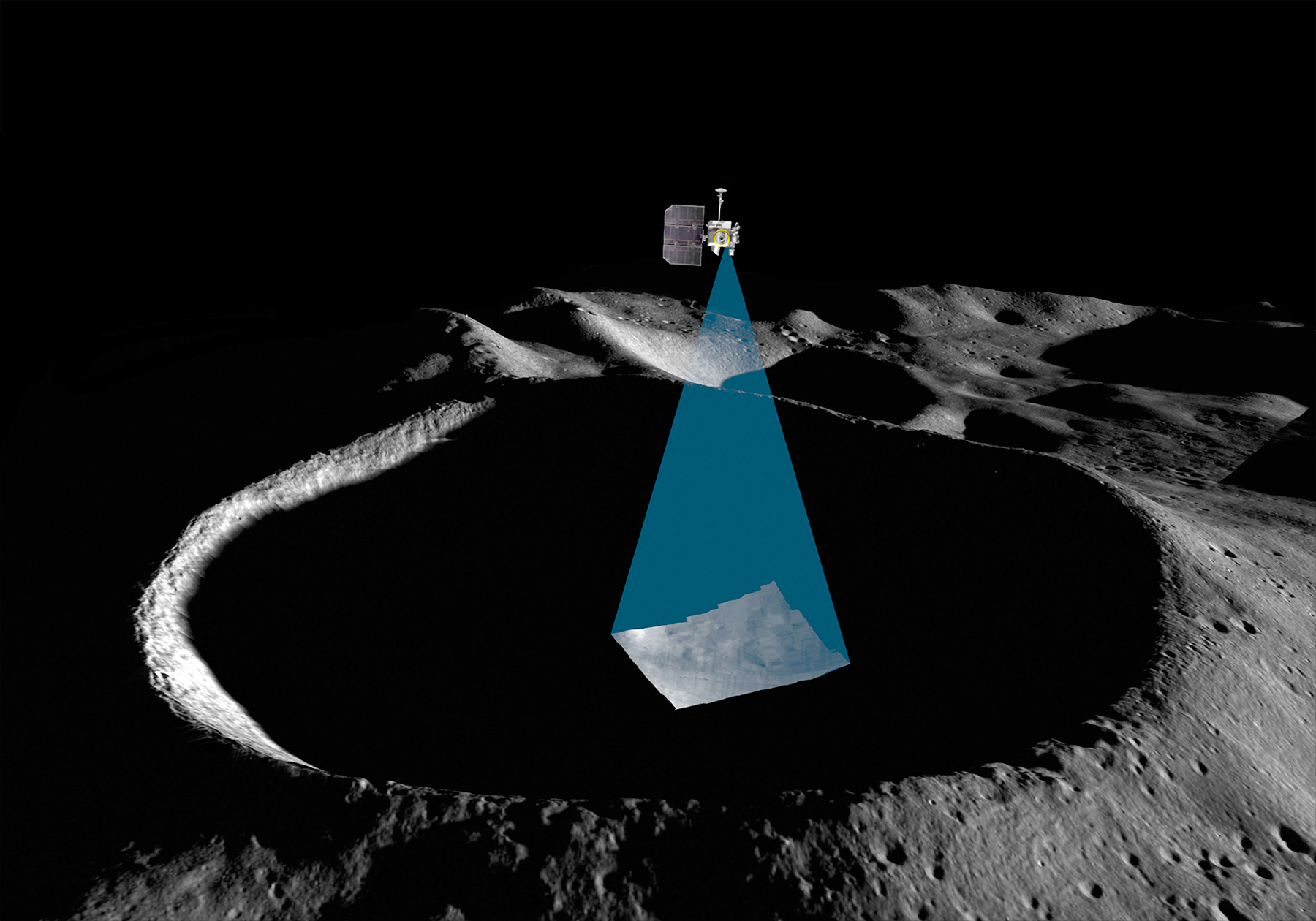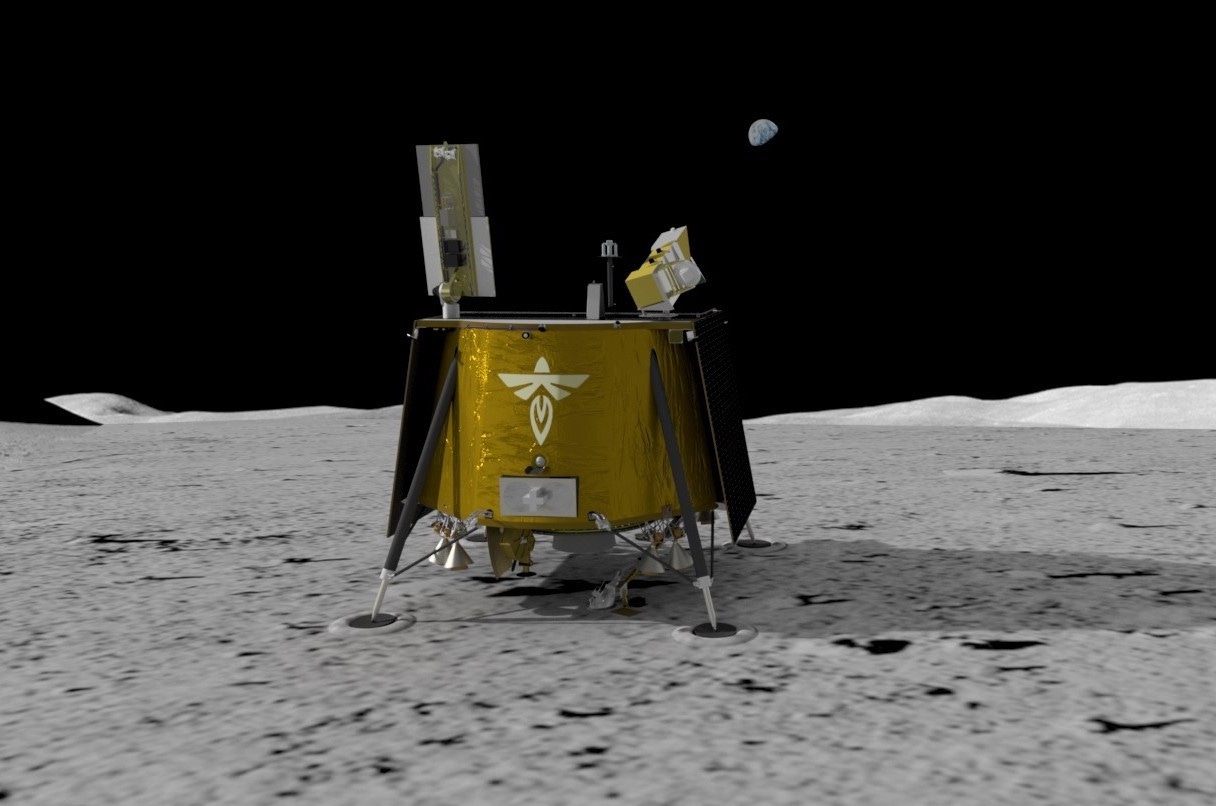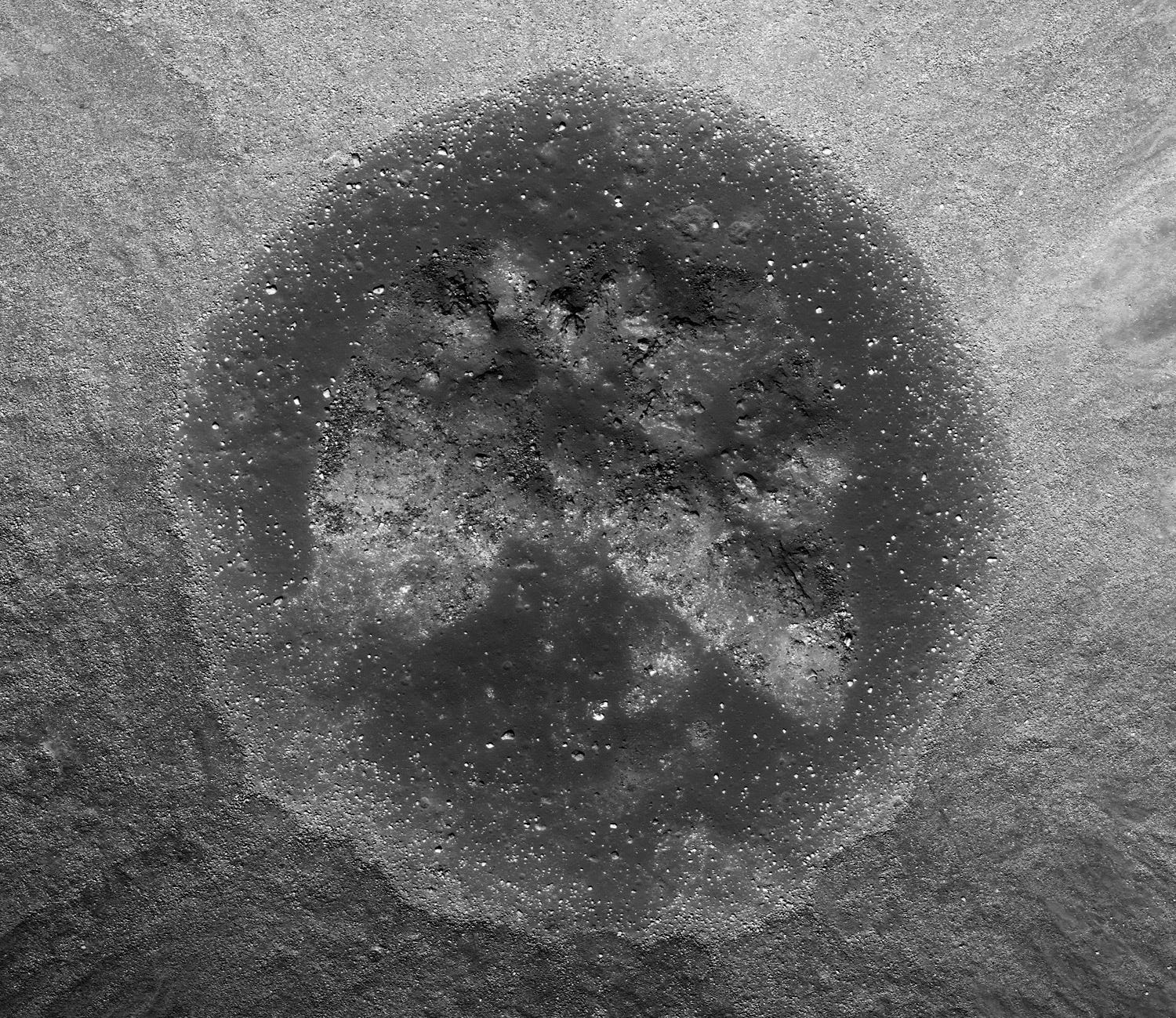Moon Monday Issue #41
Blue Origin sues NASA, new precision landing technologies, Russian Moon lander delayed, NASA provides a camera for South Korean mission, the changing lunar surface, and more lunar developments.
Highlight
Blue Origin filed a lawsuit against NASA in the U.S. Court of Federal Claims last to last week, arguing that the agency unfairly selected SpaceX Starship for the first crewed landing on the Moon in this decade as part of their Artemis program. As a result of the lawsuit, NASA said last Thursday that it has agreed to hold the SpaceX contract and related work until November 1. While specifics of the lawsuit are sealed, Blue Origin said it’s attempting to “remedy the flaws in the acquisition process found in NASA's Human Landing System.” This is despite the fact that the U.S. Government Accountability Office (GAO) officially denied the protests filed by Blue Origin and Dynetics against NASA’s selection of SpaceX.

Blue Origin’s aggressive opposition to both NASA and SpaceX hasn’t been received well by the space community at large, including by some of their own employees many of whom left the company or took to Reddit to express that they don’t agree with Blue Origin’s management and PR moves. As someone who has been part of and led (parts of) Marketing & Outreach teams for a space company as well as a science institution, I find Blue Origin’s PR tactics not just disagreeable but also disrespectful of what I think at least half decent marketing and outreach should be like, if not the ideal ethical virtues that we can’t expect from any corporate anyway.
Exploration
As part of NASA’s Tipping Point contract to Blue Origin worth $3 million, the next flight of Blue Origin’s New Shepard suborbital rocket will carry hardware on its exterior to demonstrate a co-developed precision lunar landing technology for both crewed and robotic spacecraft. Similar hardware was successfully tested on a New Shepard flight in October 2020. Since then, both entities successfully tested their autonomous navigation software with a live simulation of a spacecraft landing on the Moon’s south pole. With the upcoming flight, their aim is to better demonstrate the system’s ability to determine a spacecraft’s location and speed by continuously identifying terrain features using cameras and sensors, and use that to navigate and land with precision. Data from this flight will be open sourced on data.nasa.gov just like the earlier flight. Related: NASA is also funding Blue Origin to upgrade New Shepard’s capsule by late 2022 to simulate lunar gravity.
Related: Astrobotic successfully field-tested their NASA-contracted laser mapping and navigation system with a drone that 3D-mapped part of a glacier in Alaska in real time. This technology will enable a spacecraft to autonomously navigate relative to any terrain it finds itself on, identify potential hazards, and select and touchdown on a safe landing site. This is very useful for landing in and around permanently shadowed regions, rocky terrain, or dark areas on the Moon as well as on icy moons in the outer solar system like Europa or Enceladus. This research builds on Astrobotic’s ongoing work on hazard detection and avoidance technologies for its NASA CLPS mission to land the agency’s VIPER rover on the Moon’s south pole in 2023.
Testing continues of NASA’s almost-fully-stacked SLS rocket for its first flight to send an uncrewed Orion spacecraft on a mission around the Moon and back later this year or early next. Apart from extensive software testing, NASA engineers are testing the rocket’s natural vibrations using mobile hydraulic shakers and 300 sensors. They will feed this data into the flight computers so that the rocket’s brains can, during flight, differentiate between its intrinsic vibrations and externally imparted ones, and safely control the rocket and steer it to the right orbit in an optimal way.
Russia’s Luna-25 Moon landing mission will launch in May 2022 instead of October this year. Roscosmos says that simulated space tests of the Luna-25 lander has revealed the need for more checks to ensure its reliability. Luna-25 will have 30 kilograms worth of scientific instruments, including an arm to sample material from 20 to 30 centimeters below the surface and feed it to a laser spectrometer to determine which elements and isotopes are present. There’s also an ESA camera onboard to image the landing, and a neutron and gamma ray spectrometer to identify the composition of the subsurface. The mission’s landing site, while not truly polar due to engineering constraints, is selected at about 70° South such that subsurface water ice can still be detected and mapped.
NASA delivered their ShadowCam imager to South Korea on August 13, which will fly on the Korea Pathfinder Lunar Orbiter (KPLO) set for launch in 2022. ShadowCam will map the Moon’s permanently shadowed regions using dim but detectable reflected light coming out of these regions, and will do so with at least 200 times more sensitivity than NASA’s LRO spacecraft. ShadowCam will provide critical information about the distribution and accessibility of volatiles, including water, in the Moon’s polar regions. NASA’s collaboration with South Korea on the mission goes beyond ShadowCam. In March 2021, NASA selected nine scientists to join the KPLO science team, each of whom will work with at least one of the five instruments onboard.

Related: In May 2021, South Korea signed the Artemis Accords, which NASA calls “a practical set of principles to guide cooperation among nations participating in NASA’s 21st century lunar exploration plans.” Last week, South Korea’s vice foreign minister said that an international diplomatic framework like the Artemis Accords is the most effective way to settle concerns regarding the ownership of lunar resources. As lunar activity continues to intensify, he expects diplomacy to become increasingly important.
A new meta-level of rideshare launches to space in now a reality thanks to Intuitive Machines’ deal with Spaceflight Inc. Intuitive Machines’ 2nd Moon landing mission, targeting a December 2022 launch, will carry an attached dispenser ring that can host up to 1,000 kilograms of payloads to deploy them on a lunar-bound trajectory. One of the spacecraft to be onboard the ring is Spaceflight Inc.’s Sherpa Orbit Transfer Vehicle, which is itself is available to book payloads on. Attached spacecraft to it will be deployed in orbit around the Moon or other nearby orbits in the Earth-Moon space as paid service. You see what I mean by a whole new meta-level of rideshare? :)
Firefly Aerospace has subcontracted Redwire to provide avionics, cameras, and an automated navigation and landing system for their Blue Ghost Moon lander launching in 2023, which will carry 10 NASA instruments as part of the agency’s CLPS program. Related: Redwire’s cameras will also be onboard another NASA CLPS mission to a magnetic lunar swirl in 2024. Specifically, the cameras will be part of a joint payload suite called Lunar Vertex on a lander and rover to map the magnetic field at the swirl’s surface and study its properties.

Also related: Redwire’s dual-rover extractor system won the first prize in NASA’s Break the Ice Lunar Challenge Phase 1 awards, for which over a dozen teams submitted novel ideas to excavate water and other lunar resources from permanently shadowed regions for use by astronauts on long-duration missions and by future lunar habitats.
Science
A new study finds that smaller-sized iron nanoparticles form on the Moon’s surface at a similar rate to the radiation damage in Apollo samples. This hints that the solar wind—a constant stream of charged, energetic particles emitted by the Sun—could be creating a significant amount of iron nanoparticles rather than (just) micrometeorites doing so. Scientists are coming to a consensus that the solar wind influences the Moon’s surface much more than previously thought.
Earlier this year, a study said that solar energetic particle events that are more intense than the usual solar wind may spark, melt and vaporize the lunar soil at a rate comparable to micrometeorites, thus finally explaining why the dark, mare areas on the Moon vary in their reflectivity with latitude.
Both of these results are consistent with another recent study that says that lunar swirls seem to have fewer nano-sized iron particles than the rest of the Moon’s surface, because their magnetic fields afford them light protection against the solar wind, also reducing the darkening of their surface as a result.
Another recent study by Japanese scientists demonstrated in a lab for the first time that water molecules can be created on the Moon, and other airless bodies including asteroids, from only solar wind protons striking surface minerals, meaning micrometeorite impacts may not be strictly necessary to produce lunar surface water.
Our view of the Moon’s surface and what it can hold has drastically changed in just the last 10 years. The Moon has so much science to offer, and so hopefully this renewed global lunar exploration frenzy will sustain.
More Moon
Enjoy this gorgeous view of Schiaparelli E’s crater floor captured by NASA LRO. Its floor is partly smooth due to the accumulated melt from the impact that formed the crater, and partly rugged due to the debris collected within.

Thank you Open Lunar Foundation, Epsilon3, and SWISSAPOLLO for supporting me and powering this edition of Moon Monday.
Everyone, I’m publishing this one-of-a-kind Moon exploration newsletter for free, with no ads. And it will stay that way. If you like my work, your support will keep it going. I’ve recently updated payment options to accept PayPal and debit cards in addition to credit cards. For Indian readers, there are additional options for UPI and INR currency payments.
